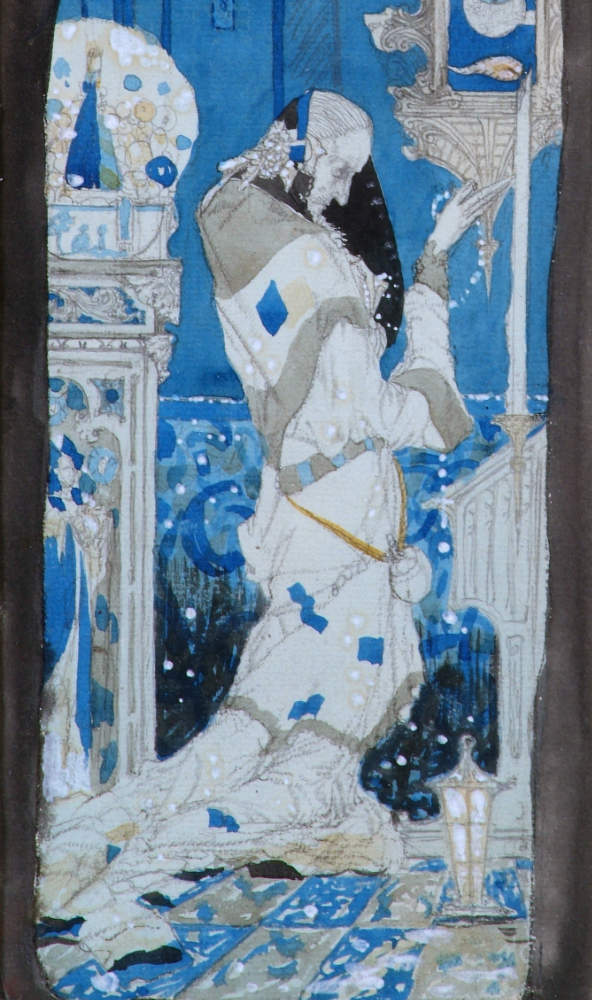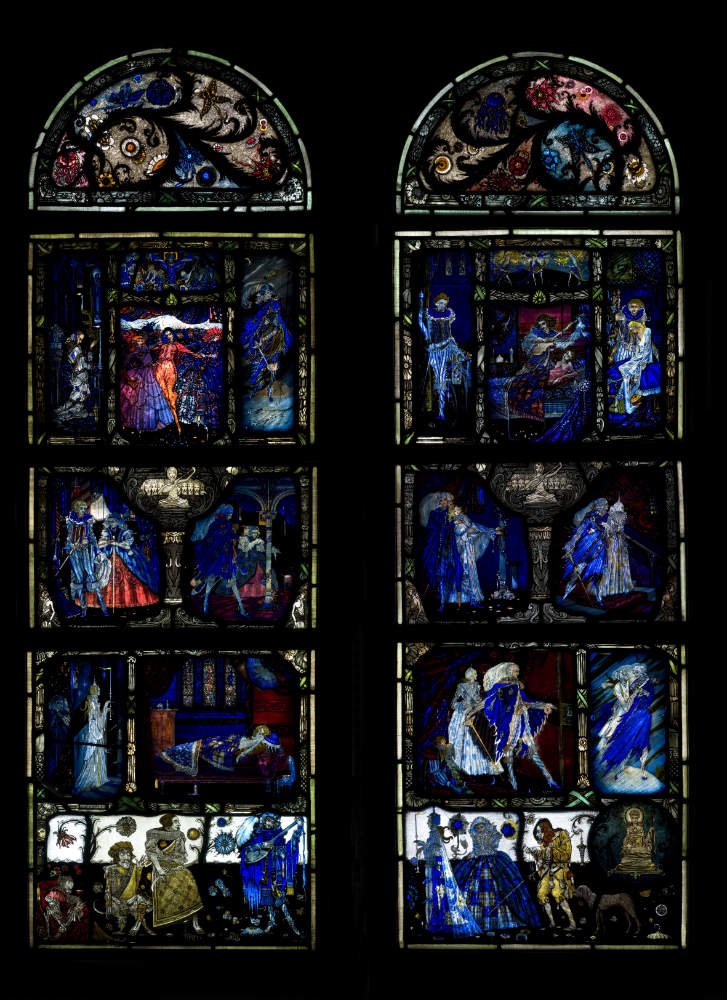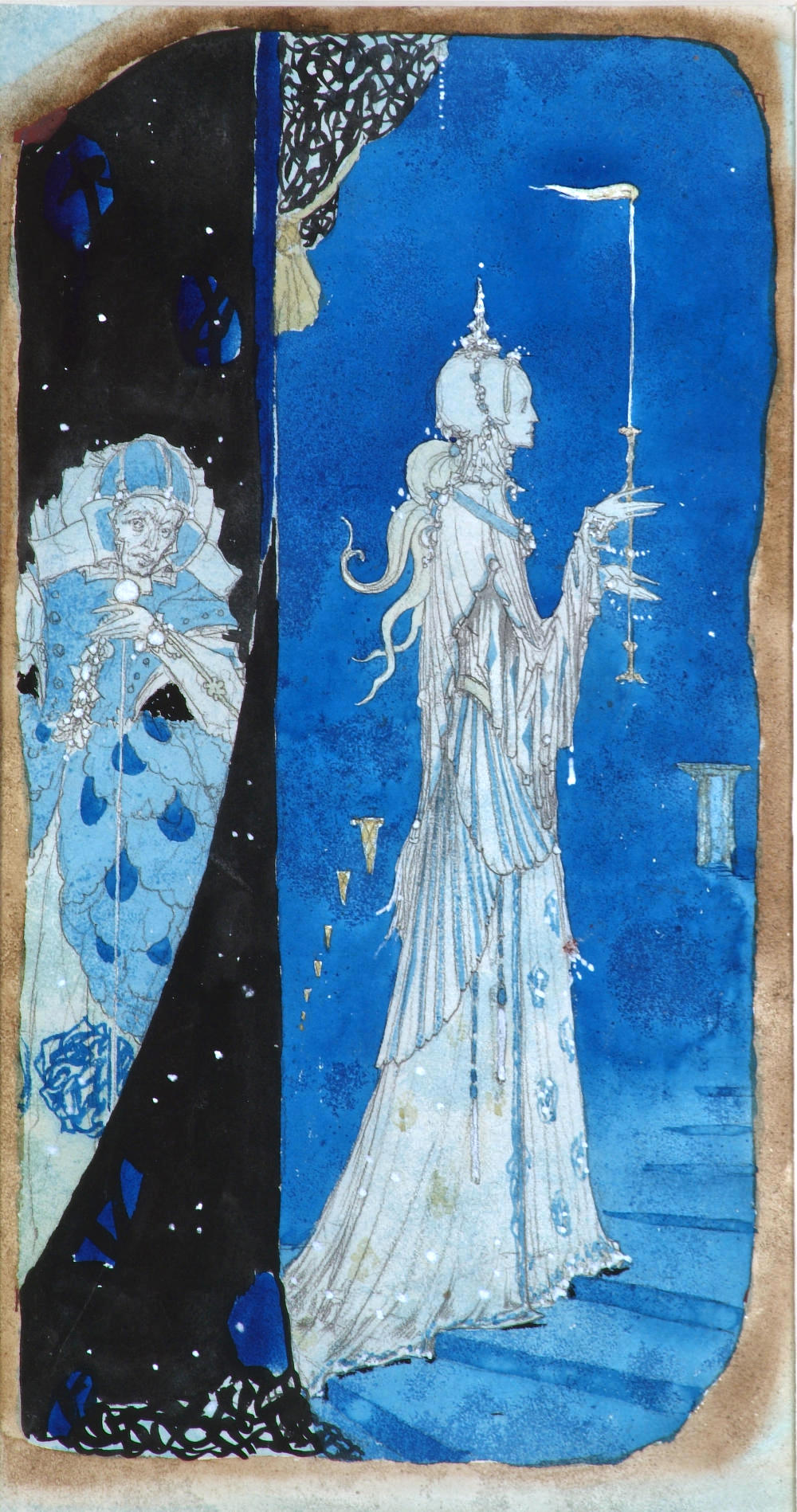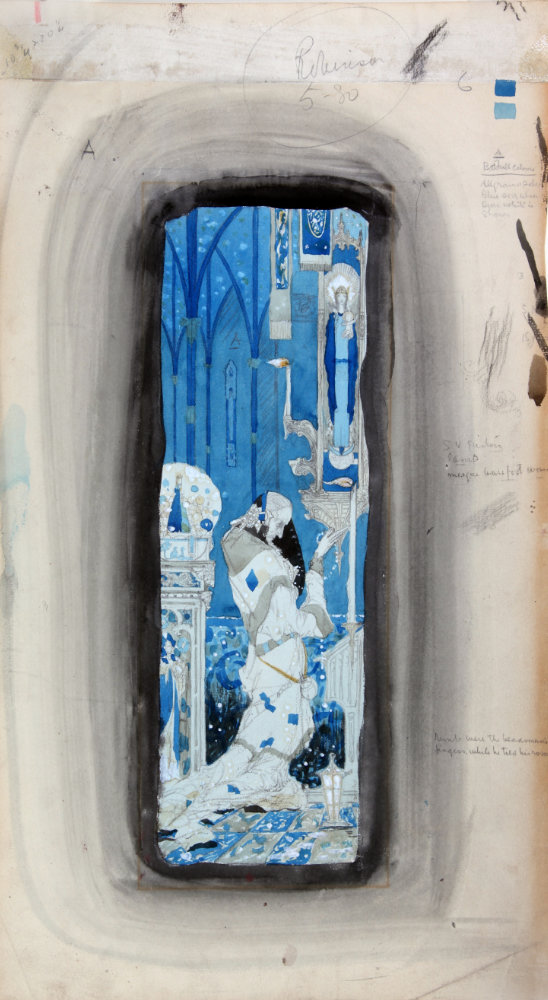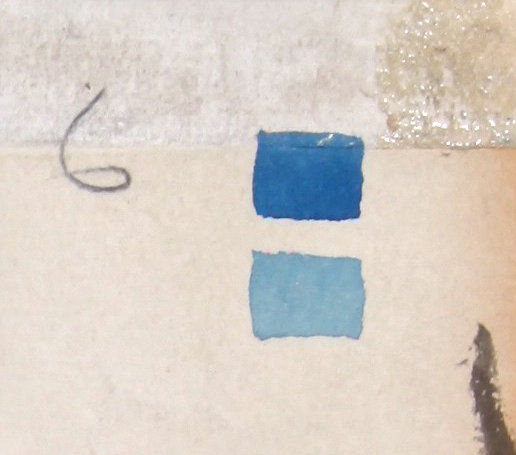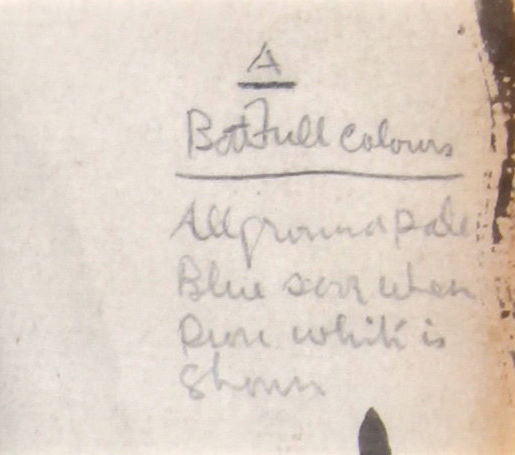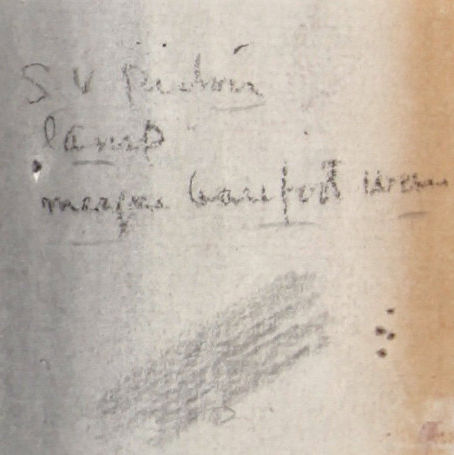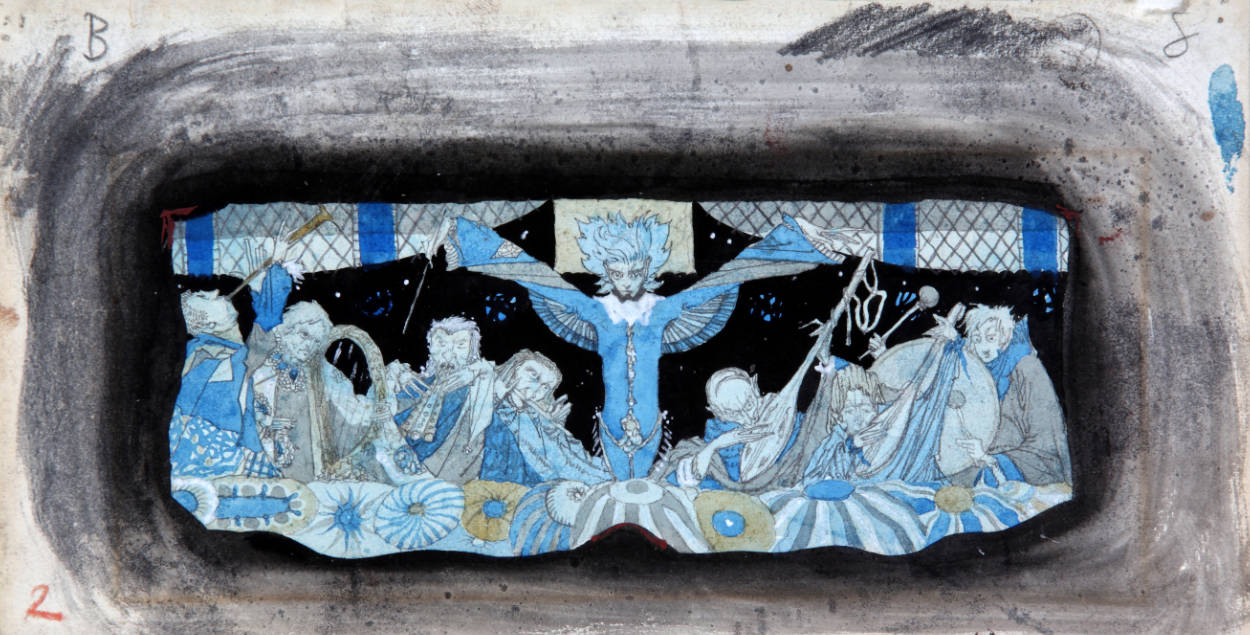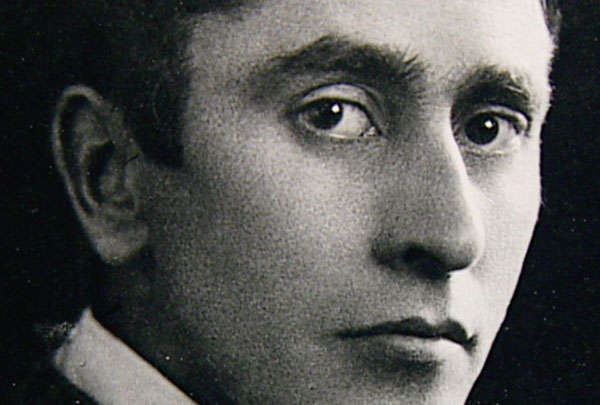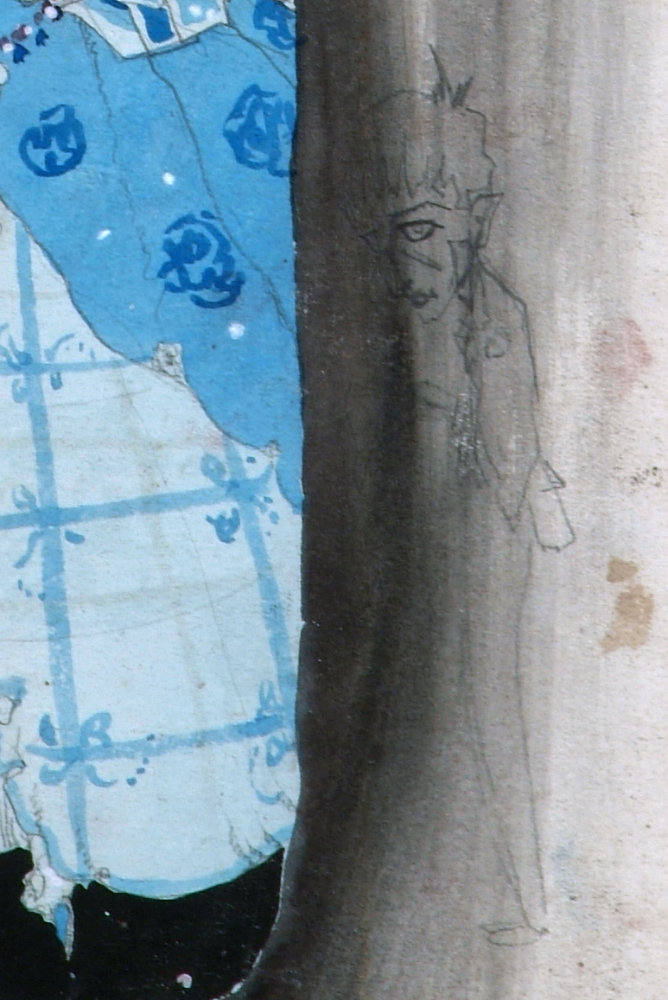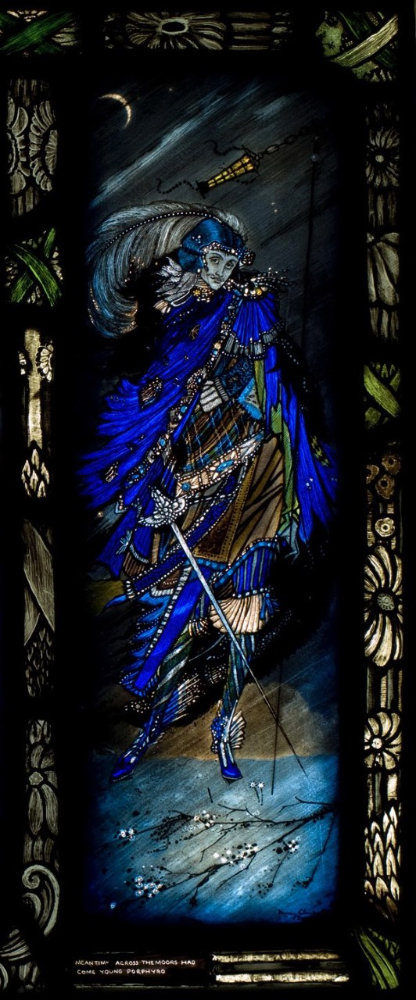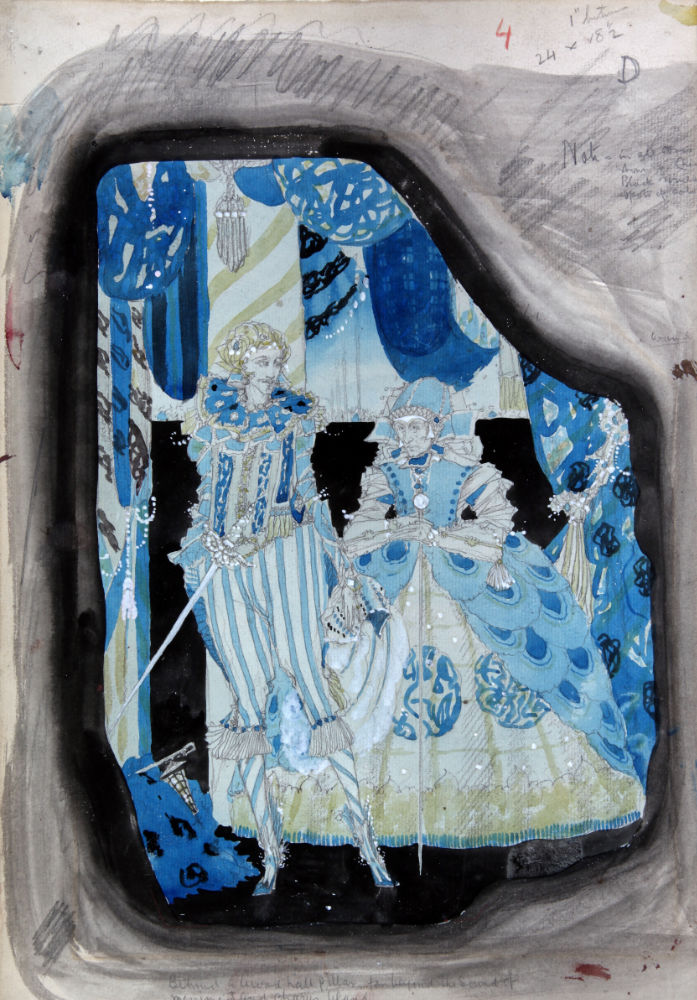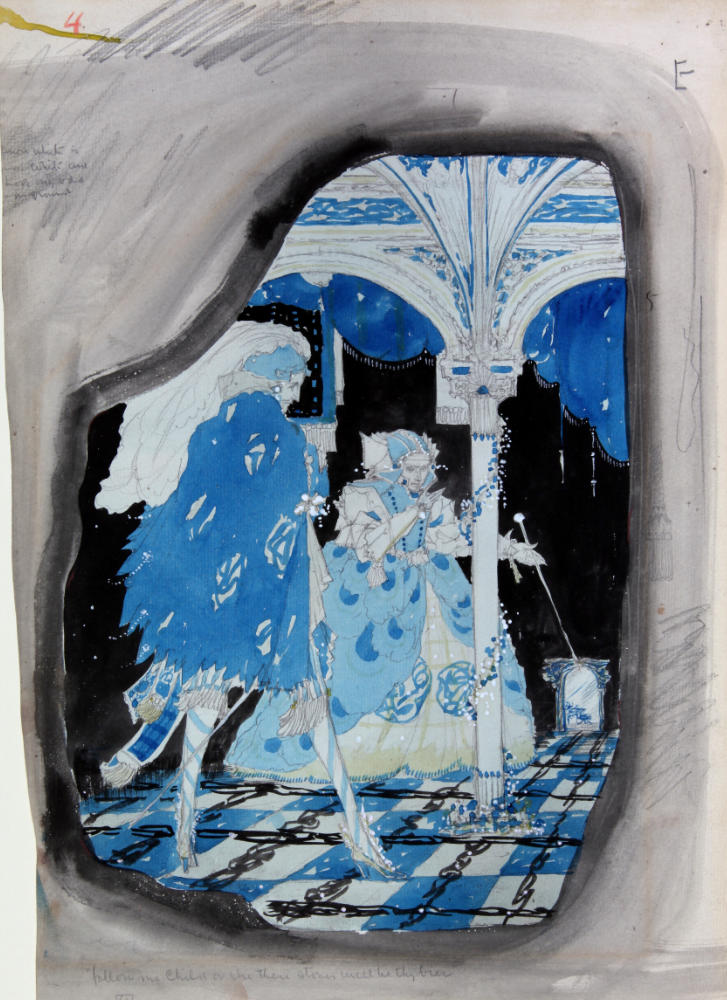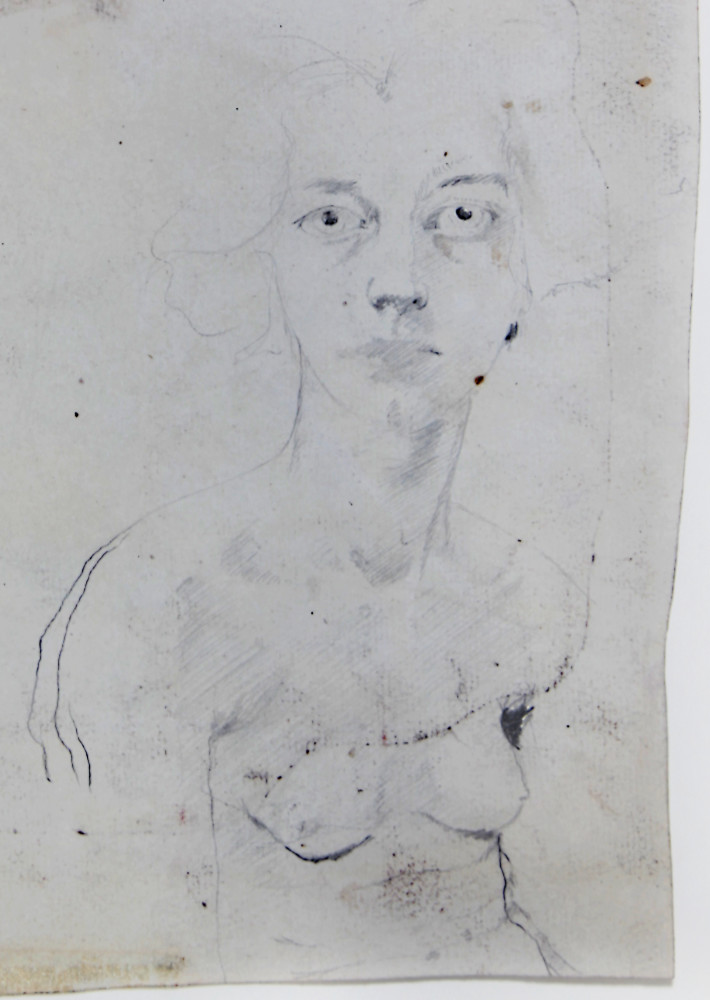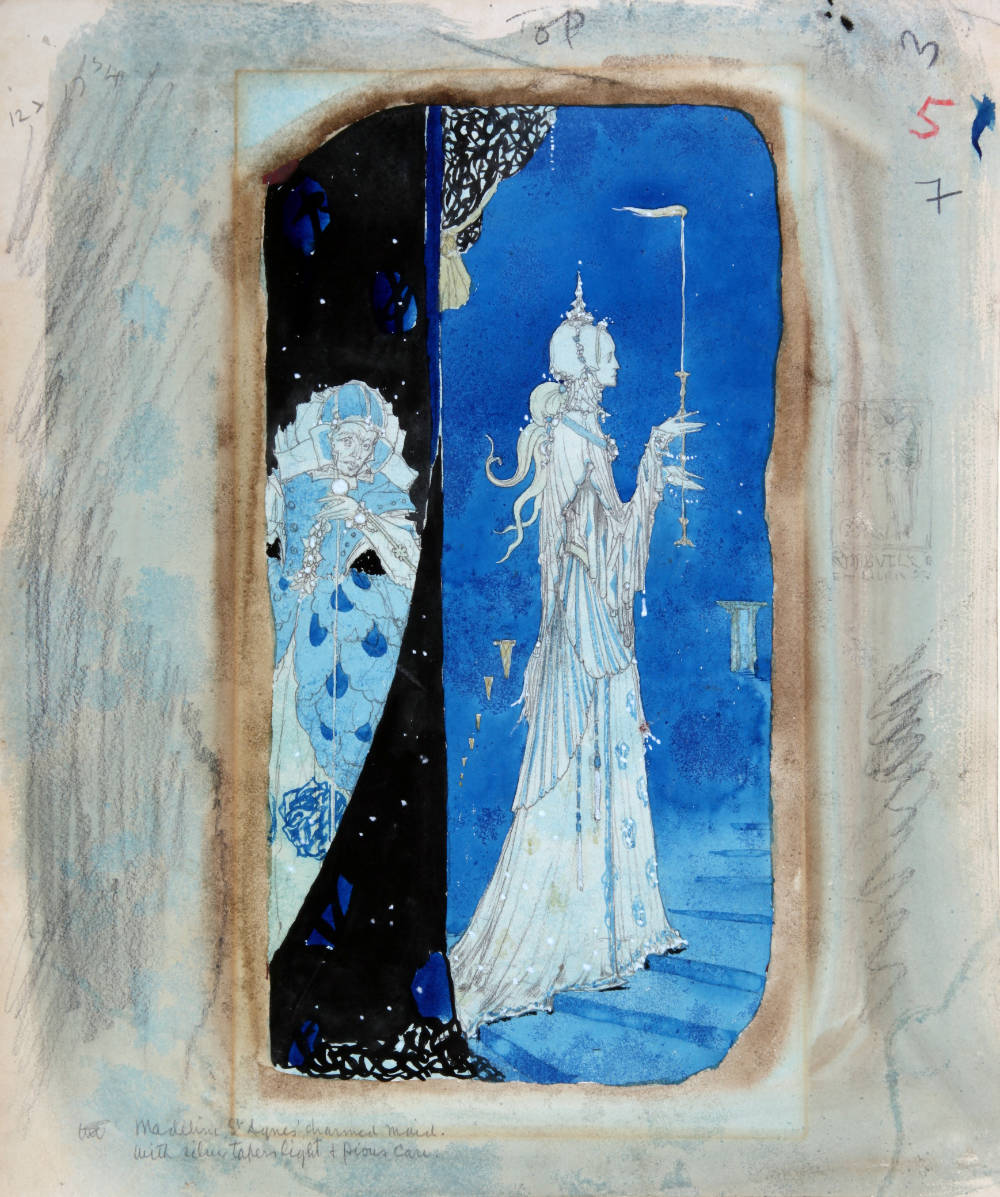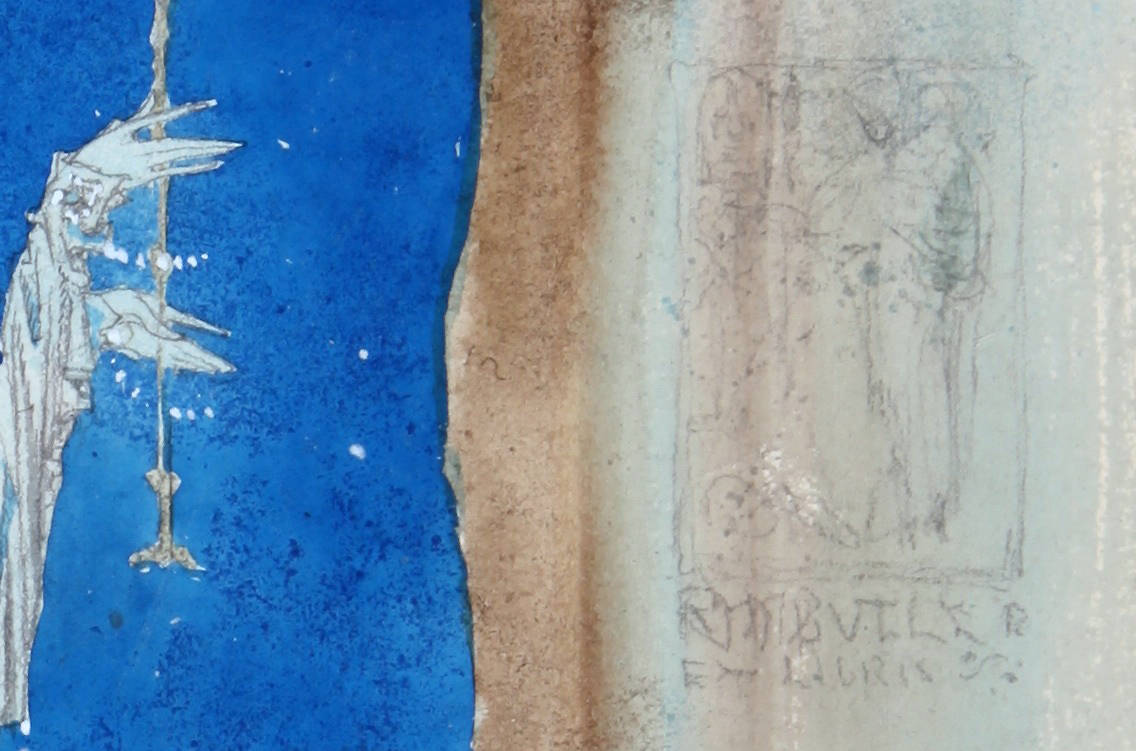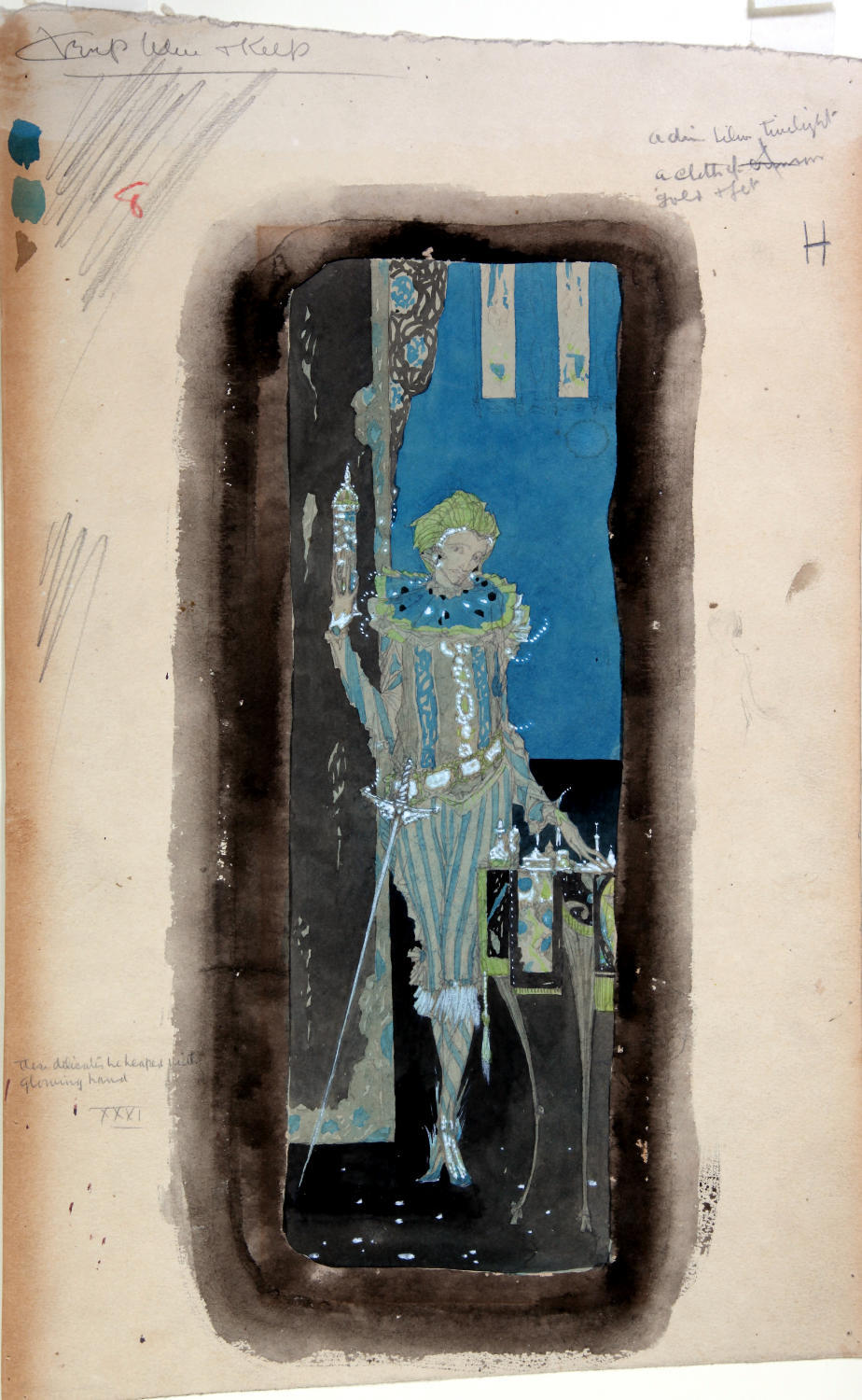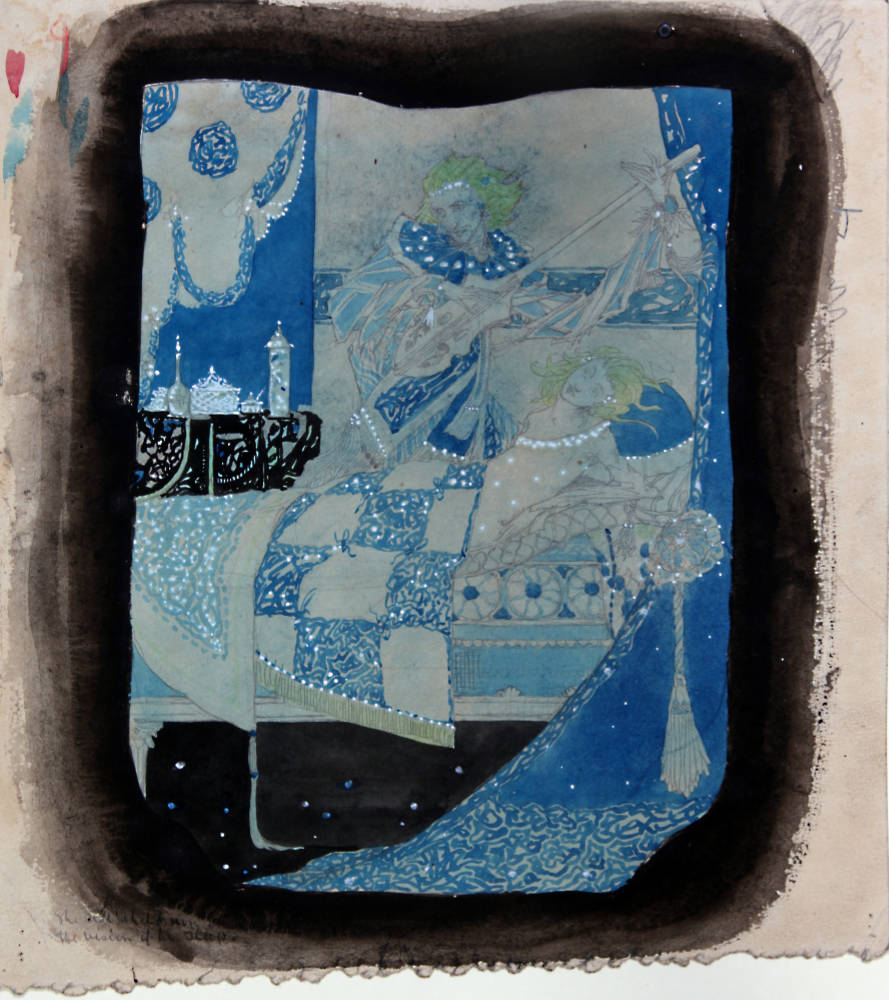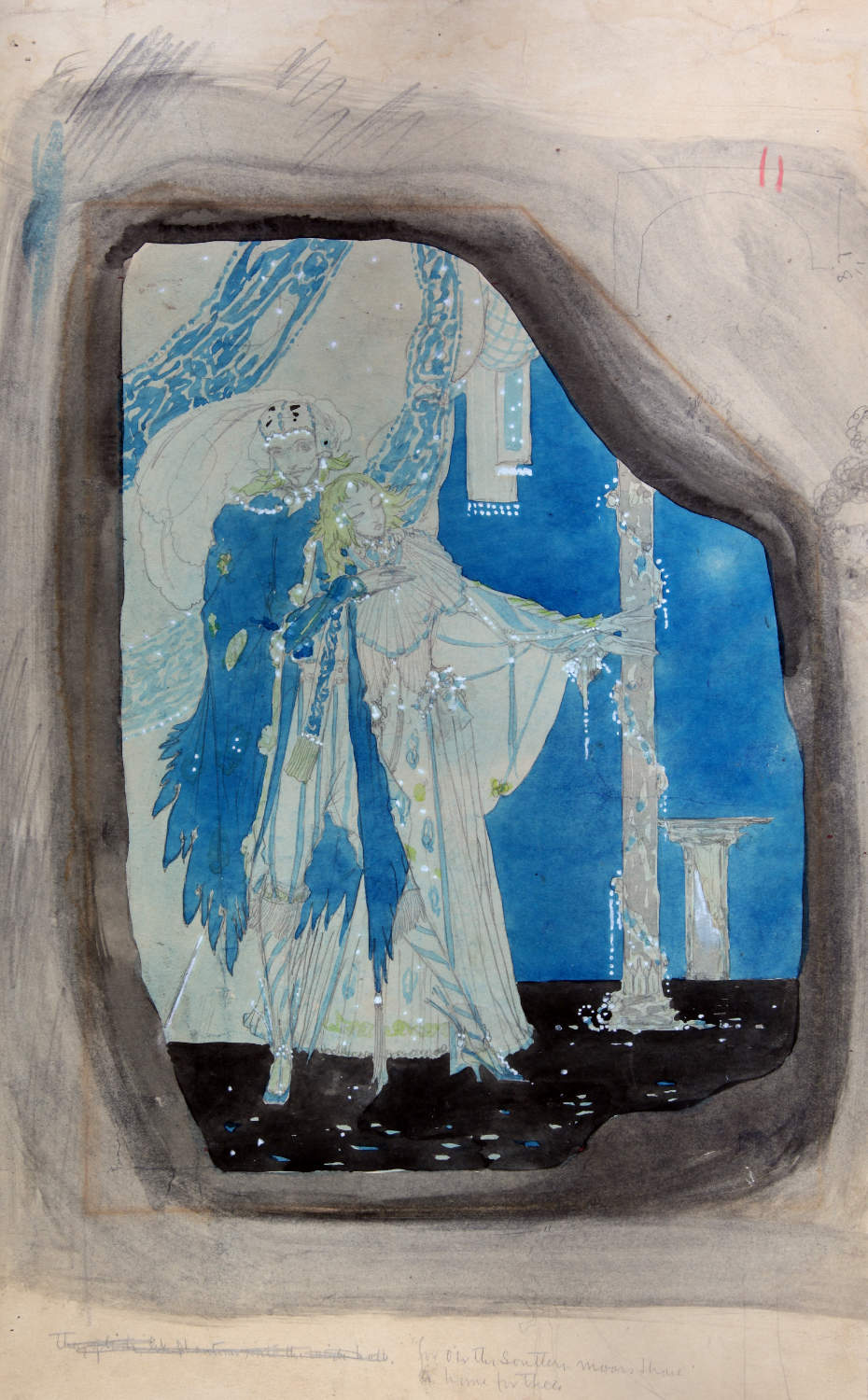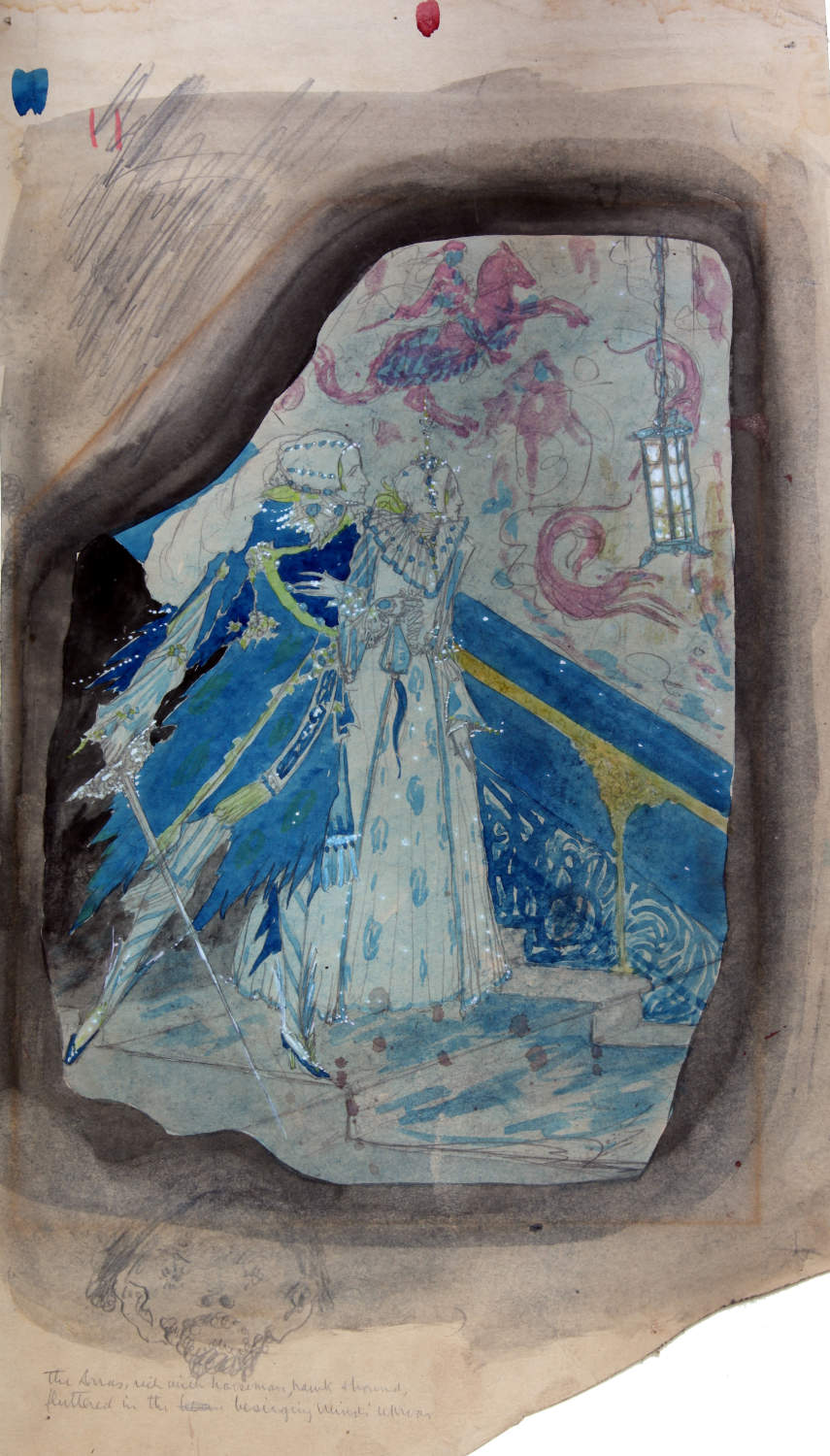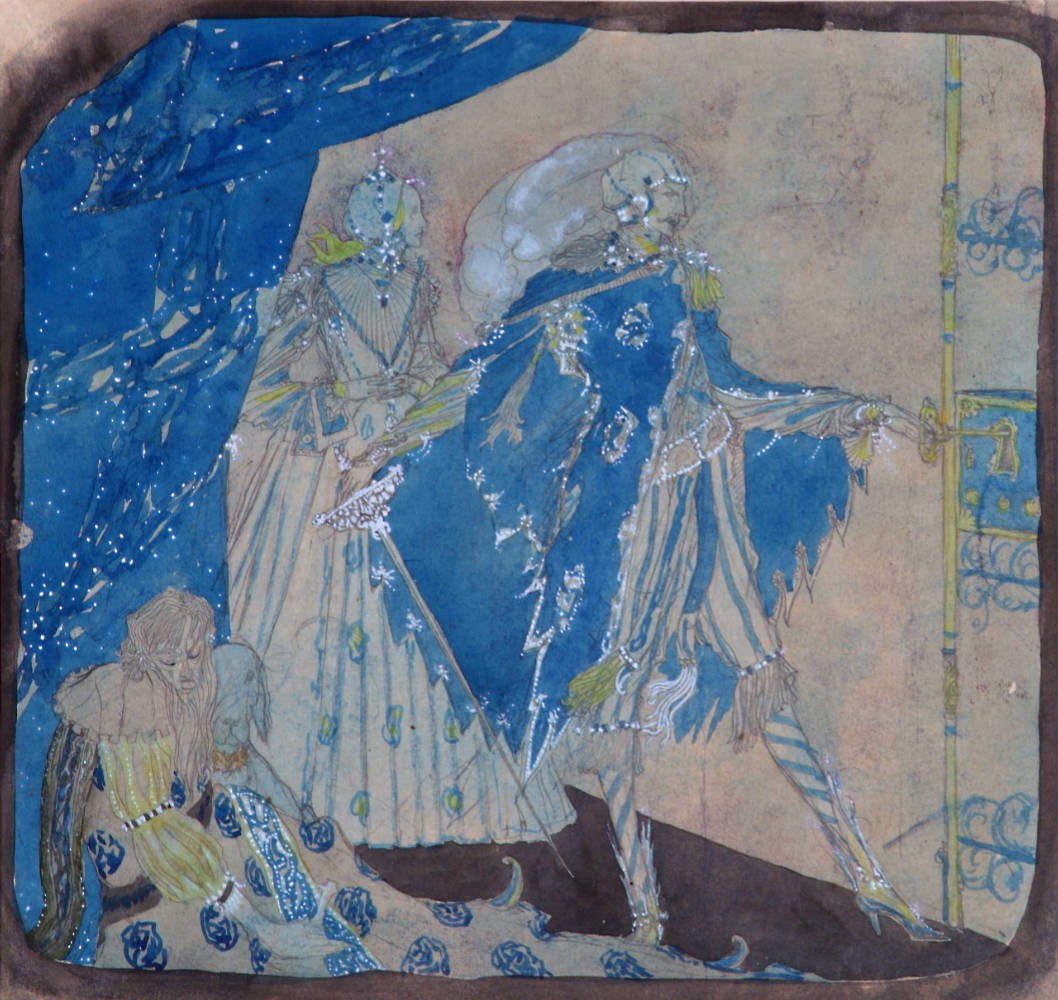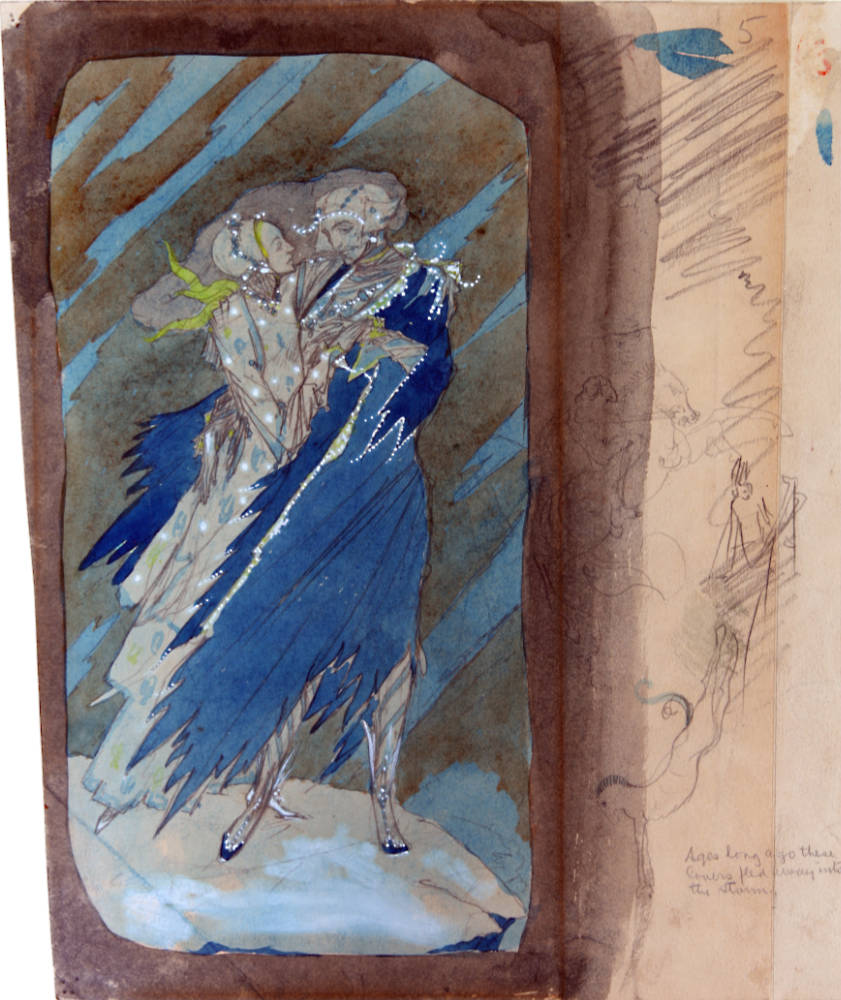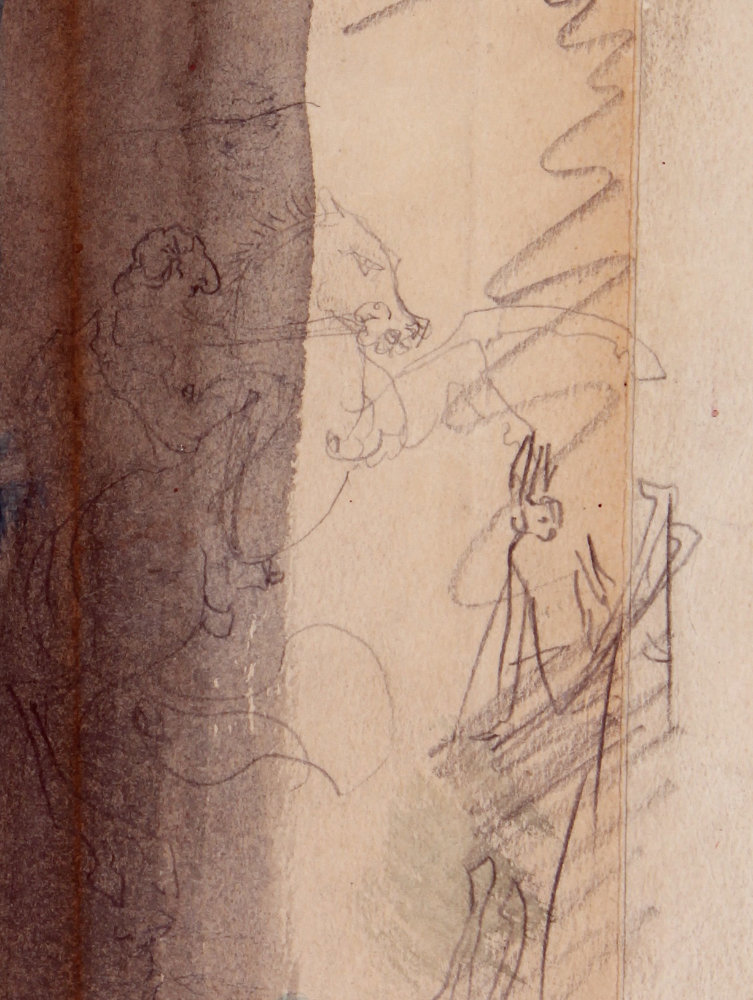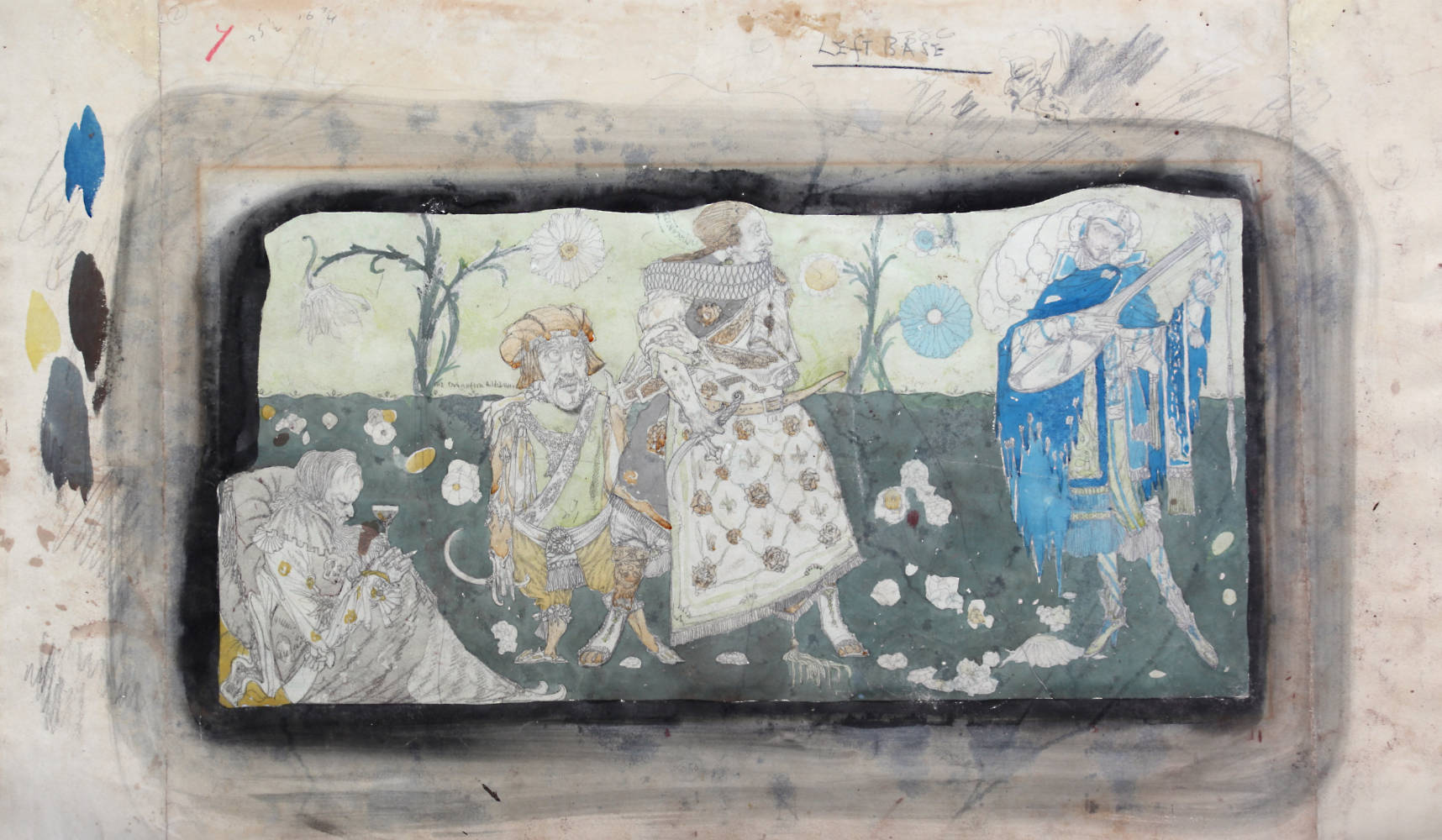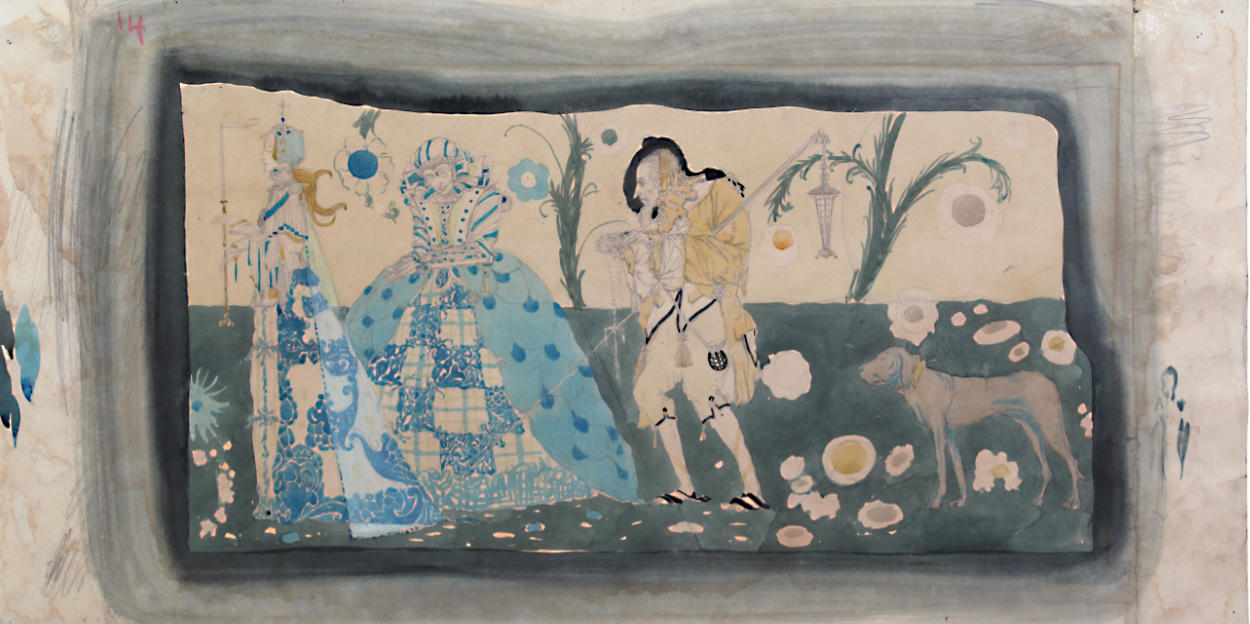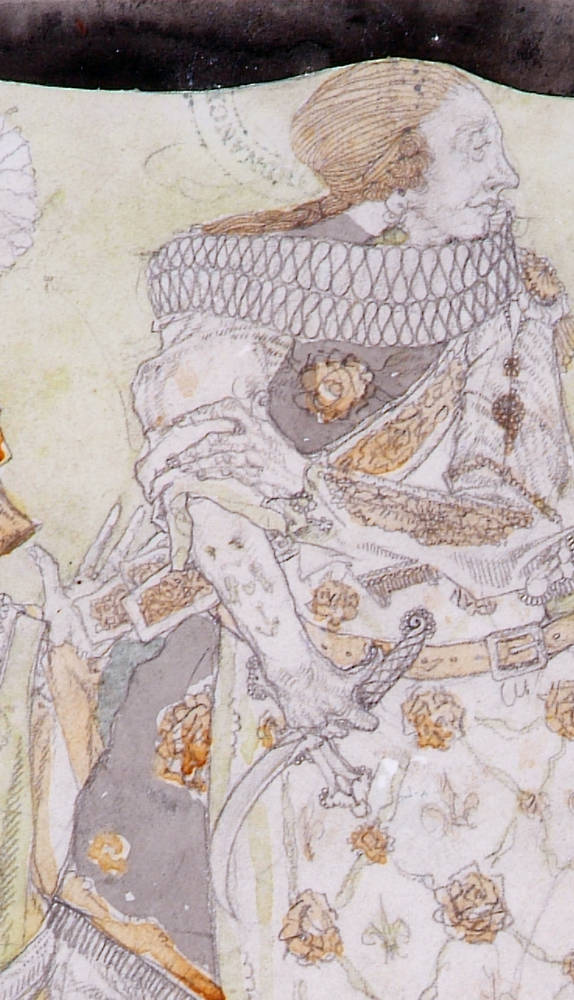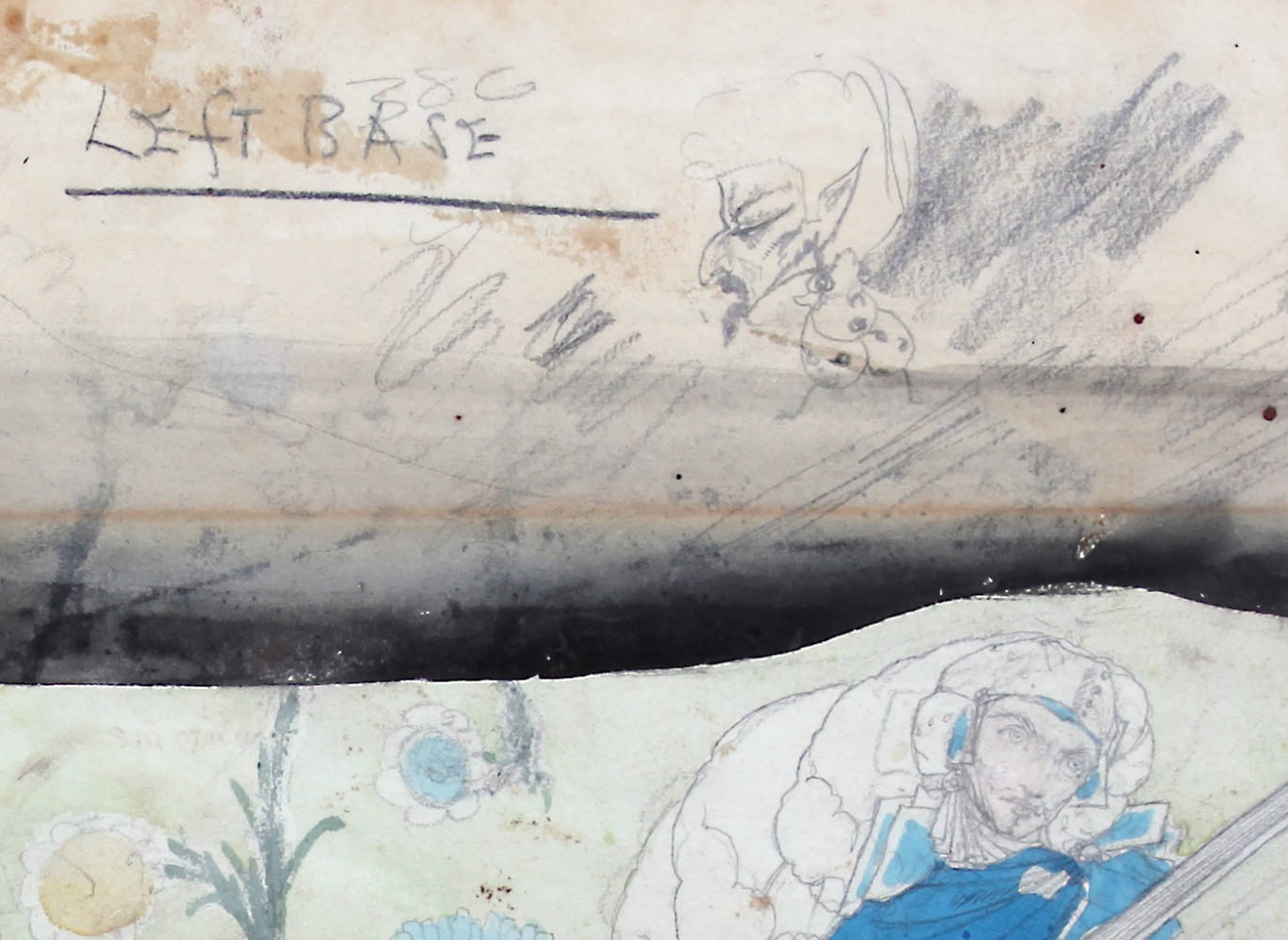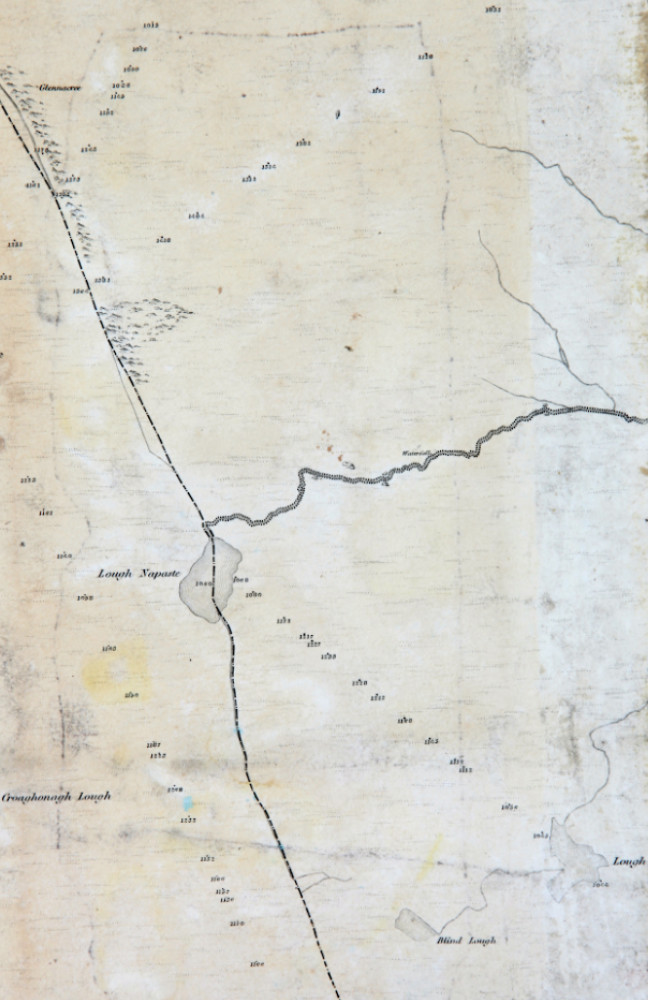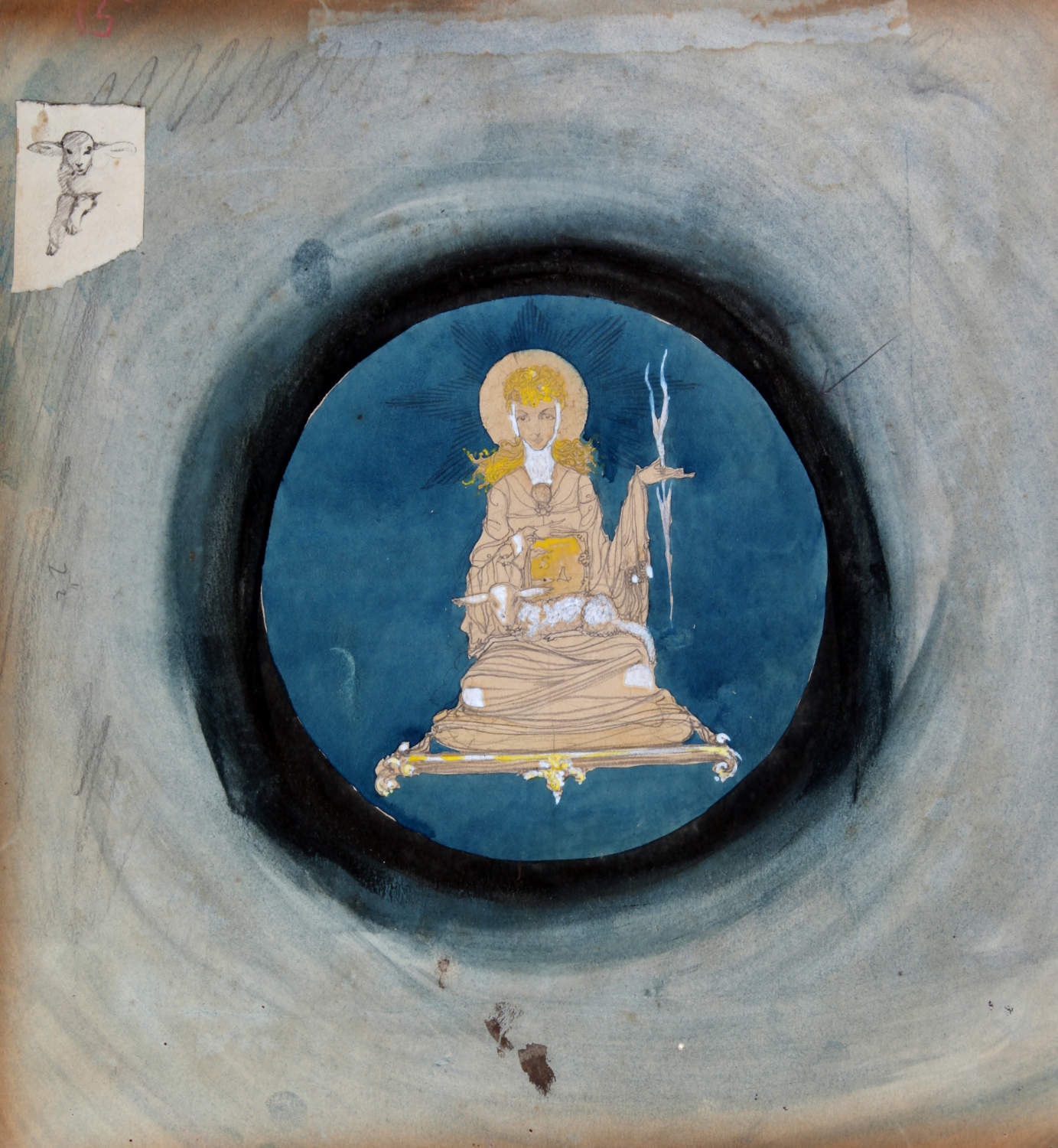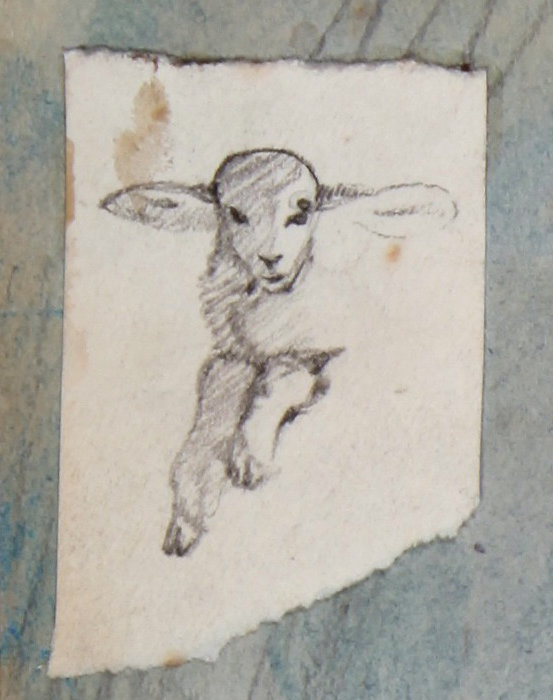By 1923, Clarke was a well-connected artist and enjoyed public success in his stained-glass work. His book illustrations for editions of Hans Christian Andersen’s Fairy Tales (1916) and Edgar Allan Poe’s Tales of Mystery and Imagination (1919) also brought him acclaim. Publishers and writers alike took note.
On the reverse of Behind a Broad Hall-Pillar, far Beyond the Sound of Merriment and Chorus Bland, an address noted in Clarke’s own hand can be identified: ‘Frau Fleischmann, 6 Wellesley Terrace, Wellington Road, Cork.’
The artist was in correspondence with Tilly Fleischmann (1882-1967) at this time, according to Fleischmann family records, and attended her Franz Liszt recital at the Abbey Theatre in 1923.
Several years earlier, Fleischmann had conducted the Cathedral of Saint Mary and Saint Anne choir during the consecration of the Honan Chapel (1916), University College Cork. Clarke had contributed eleven windows to the same chapel, a jewel of the Irish Arts & Crafts Movement, which represents his earliest major commission. .

